This is an old revision of the document!
| Summary |
| Images are used in computer graphics and visualization to convey information. Images are computed by sampling data with rays defined by a camera model. Most images used in computer graphics and visualization are computed using the planar pinhole camera model, which suffers from important limitations such as uniform sampling rate, and single viewpoint. We propose to overcome these limitations through camera model design. The camera model design paradigm advocates designing the set of rays that best suit a given application and optimizing it dynamically according to the data currently sampled. Camera model design is a flexible framework for generating images with multiple viewpoints and with a variable sampling rate. Like conventional images, the generated images are continuous, non-redundant, and can be computed efficiently with the help of graphics hardware. Camera model design is an infrastructure-level innovation with broad applicability, including in 3-D scene exploration, remote visualization, acceleration of high-cost rendering effects, and video surveillance. |
| Occlusion Cameras: Camera Models Designed for Reducing Disocclusion Errors |
| Rendering a scene with a single reference depth image produces disocclusion errors. Samples are lacking for surfaces that are visible in the desired view, but not in the reference view. We introduce occlusion cameras, a class of non-pinhole cameras whose rays reach around occluders to gather samples that are hidden in the reference view but are likely to become visible in nearby views. These initially hidden samples alleviate disocclusion errors. |
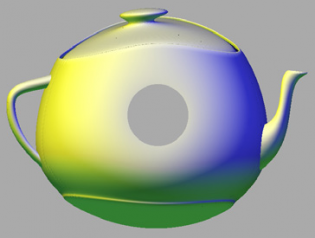
The SPOC image of a teapot captures the base and lid in addition to the body. | 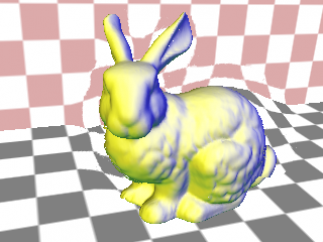
The DDOC of the bunny captures additional samples around the silhouette of the object. | 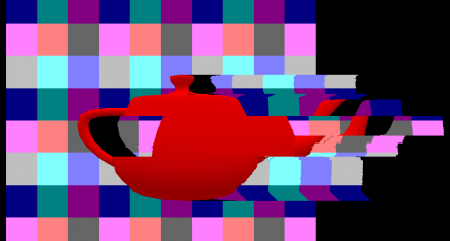
The EOC of the teapot captures all the samples needed to reconstruct a horizontal view-segment. |
| More Details |
| Graph Camera: Comprehensive Visualization of 3-D Scenes |
| A conventional pinhole camera captures only a small fraction of a 3-D scene due to occlusions. The graph camera is a non-pinhole camera with rays that circumvent occluders to create a single layer image that shows simultaneously several regions of interest in a 3-D scene. The graph camera benefits in the contexts of virtual 3-D scene exploration and summarization, and in the context of real-world 3-D scene visualization allowing the integration of multiple video feeds seamlessly. |
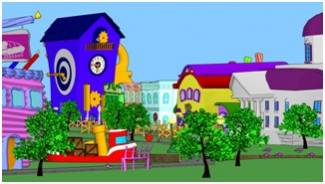
Graph camera used to summarize a complex 3-D scene into a single image. | 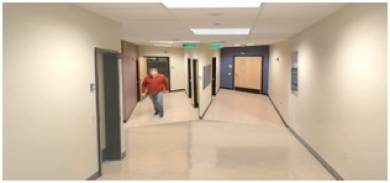
Graph camera used to combine multiple video feeds into a single image for surveillance. | 
Graph camera used for a comprehensive street level view. |
| More Details |
| General Pinhole Camera: A Non-Uniform Sampling Pinhole Camera |
| The general pinhole camera (GPC) model is a pinhole camera model which supports any set of sampling locations on the image plane. The GPC rays are defined by a pinhole and the desired image plane sampling locations. The GPC image is rendered by directly sampling the data to be visualized at the desired sampling locations. GPC visualization is versatile—it supports many types of data, including surface geometry, volume, and image data. GPC visualization is also efficient—complex datasets are rendered interactively with the help of graphics hardware. Moreover, if the application demands it, a GPC image can be resampled at little cost into a conventional PPC image. We demonstrate the advantages of the non-uniform sampling afforded by the GPC in three contexts: remote visualization, focus plus context visualization, and extreme antialiasing. |
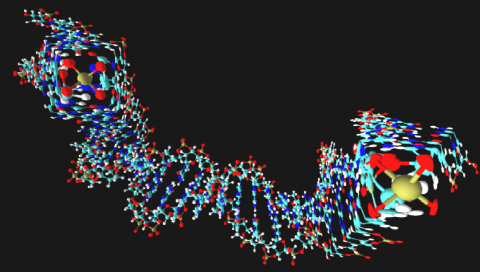
Focus plus context visualization enabled my the GPC. | 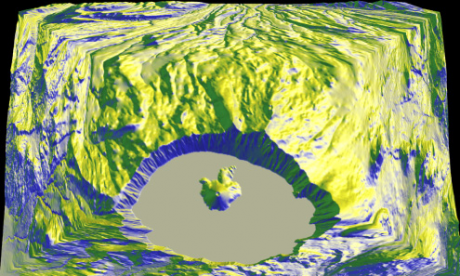
GPC used for accelerated remote visualization. | 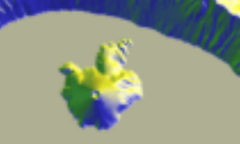
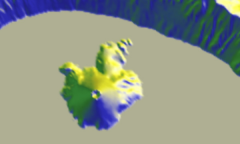
Scene reconstructed using a PPC (top) and GPC (bottom) of the same resolution. |
| More Details Available Soon |
| Camera Model Design for High-Quality Interactive Rendering Calculations |
| This project is concerned with developing techniques which producing high-quality rendering effects such as reflections, refractions, ambient occlusion, and relief texture mapping at interactive rates. This is done one of two ways. The first, develop cameras based upon a object in the scene and render the scene using those cameras. Alternatively, we replace geometry with images generated by non-pinhole cameras. Rays can then be intersected with the image-based approximations of the geometry for fast-accurate rendering effect calculations. |
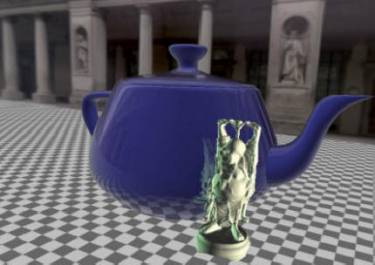 | 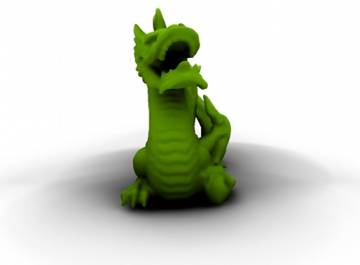 | 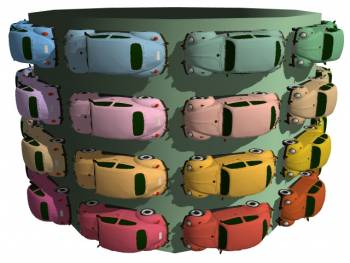 |
| More Details |

